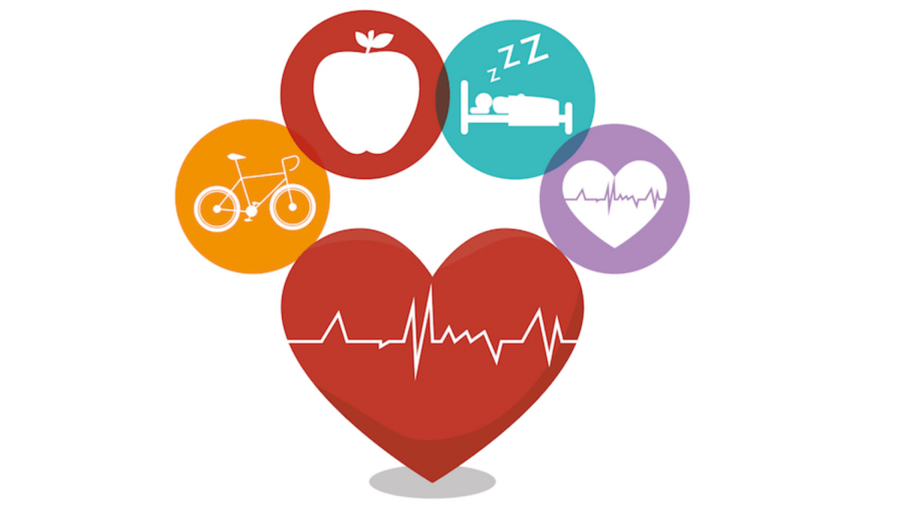Preventing Workplace-Related Health Issues: A Holistic Approach to Employee Well-being
Organizational success hinges on maintaining employee well-being. This article explores the multifaceted nature of workplace health, integrating relevant theories and models to offer practical strategies for mitigating common health risks. We will examine the Job Demands-Resources (JD-R) model, which posits that job strain arises from a high ratio of demands to resources; ergonomic principles in workplace design, focusing on the human-machine interface; and the Health Belief Model (HBM), which emphasizes individual perceptions of health threats and benefits in influencing health behaviors. These frameworks provide a robust foundation for understanding and addressing workplace health challenges.
Stress Management and Mental Well-being: A JD-R Model Perspective: Workplace stress significantly impacts health. The JD-R model emphasizes the crucial balance between job demands (e.g., workload, deadlines, role ambiguity) and job resources (e.g., autonomy, social support, feedback, opportunities for growth). High demands coupled with low resources create job strain, increasing the risk of burnout, anxiety, and depression. Practical applications include implementing stress management training programs incorporating mindfulness techniques and cognitive behavioral therapy (CBT) principles. Organizations can foster a supportive work environment by promoting open communication, providing opportunities for employee participation in decision-making, and offering access to employee assistance programs (EAPs) for confidential counseling and support. This proactive approach aligns directly with the resource component of the JD-R model, bolstering employee resilience and reducing the negative impact of workplace stressors. Furthermore, regular performance feedback and opportunities for professional development directly address resource inadequacy, fostering a sense of accomplishment and reducing stress levels.
Ergonomic Workplace Design and Musculoskeletal Health: Ergonomics, the science of optimizing the human-machine interface, is crucial in preventing musculoskeletal disorders (MSDs). Prolonged static postures, repetitive movements, and awkward working positions significantly contribute to MSDs like carpal tunnel syndrome, back pain, and neck pain. Applying ergonomic principles involves using adjustable furniture, ensuring proper posture through workstation assessments, and promoting regular micro-breaks to alter postures and reduce static loading. This directly reduces job demands (physical strain) within the JD-R model, while simultaneously increasing resources (a comfortable and supportive work environment). Regular movement and stretching further alleviate muscle fatigue and tension. Ignoring ergonomic considerations leads to decreased productivity, heightened healthcare costs, and potential legal liabilities.
Proactive Health Management Through Lifestyle Choices: A Health Belief Model Application: Proactive health behaviors are pivotal in preventing workplace-related health problems. Staying hydrated, maintaining a balanced diet, and obtaining adequate sleep are crucial for optimal physical and cognitive functioning. The HBM suggests that individuals are more likely to adopt health-promoting behaviors if they perceive a high susceptibility to health risks, believe the benefits outweigh the barriers, and have confidence in their ability to successfully execute the behavior (self-efficacy). Organizations can support these behaviors by offering healthy food options, promoting wellness initiatives (e.g., on-site fitness facilities, health screenings), and creating a culture that values employee well-being. Educational campaigns reinforcing the links between healthy lifestyles and reduced health risks (perceived susceptibility and severity) are essential. Promoting self-efficacy can be achieved through providing resources, such as nutrition guidelines and sleep hygiene education, and celebrating successful health behavior changes.
Visual and Auditory Stress Reduction: Practical Interventions: Prolonged screen time and excessive noise are significant workplace stressors. Visual strain from computer use leads to eye fatigue, headaches, and blurred vision. Applying the "20-20-20 rule" (every 20 minutes, look at an object 20 feet away for 20 seconds) is a practical HBM application, raising perceived susceptibility to visual problems and improving self-efficacy in preventing them. Similarly, noise exposure can cause hearing loss. Implementing noise reduction strategies (e.g., soundproofing, noise-canceling headphones) and incorporating regular breaks away from noisy environments are essential.
Hygiene and Infection Control: Applying the Germ Theory: Basic hygiene practices, such as regular handwashing with soap and water or using hand sanitizer, are crucial in preventing the spread of infectious diseases. This directly reflects the germ theory of disease. Maintaining a clean and organized workspace further contributes to a healthy work environment. Regular disinfection of frequently touched surfaces is also critical in minimizing disease transmission.
Proactive Communication and Access to Healthcare: Facilitating Early Intervention: Open communication between employees and supervisors is paramount. Employees should feel empowered to express concerns regarding workplace health issues. This proactive communication allows for early intervention and problem-solving, preventing minor issues from escalating into major health concerns. Access to healthcare providers for persistent health issues is equally crucial for appropriate diagnosis and treatment. Organizations should facilitate access to healthcare through partnerships with healthcare providers or by providing health insurance plans that offer comprehensive coverage.
Conclusions and Recommendations
A holistic approach to workplace health requires integrating ergonomic design, stress management strategies, proactive health behaviors, and open communication. By implementing the strategies outlined above, organizations can substantially decrease the prevalence of workplace-related health issues, enhancing employee well-being, productivity, and reducing healthcare costs. Future research could focus on developing personalized interventions tailored to specific occupational contexts and employee characteristics. Longitudinal studies investigating the long-term efficacy of various workplace health promotion programs and their influence on employee retention and organizational performance are necessary. Cost-effectiveness analyses of these interventions are crucial to demonstrate their value to organizations. Furthermore, research should explore the integration of technology in supporting employee well-being, such as wearable devices for monitoring physical activity and stress levels, and the development of AI-powered tools for providing personalized health recommendations.
Reader Pool: Considering the evolving nature of work and the increasing prevalence of mental health challenges, how can organizations effectively adapt their employee well-being programs to meet the unique needs of a diverse workforce in the face of technological advancements and remote work arrangements?





No comments yet. Be the first to share your thoughts!